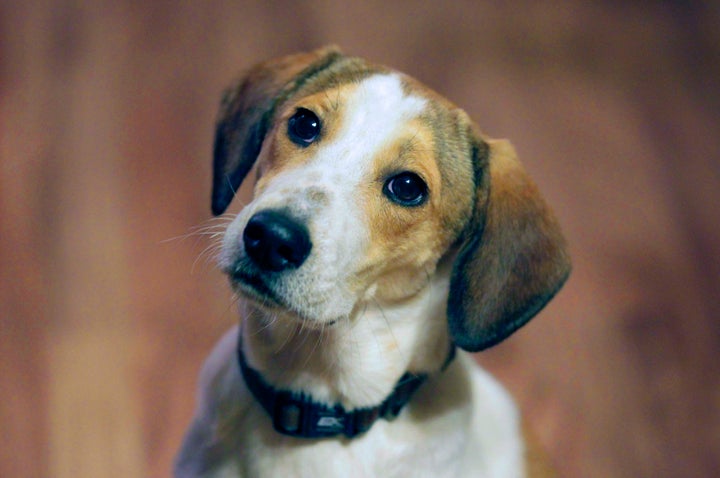
As the weather turns colder, it's time to cuddle up with four things: dogs and cats, and dog and cat books.
Actually, our animal friends are not "things," which is why I love to see those charismatic critters in works of fiction and nonfiction. They bring warmth to books, and their relationships with the books' human characters help flesh out the personalities of both the bipeds and quadrupeds.
Plus the animals in books remind us of our beloved pets. If that's not a reader draw, I don't know what is!
The United States has plenty of real-life canine and feline pets -- a combined total of nearly 165 million, according to Humane Society estimates. I don't think there are quite that many animals in books (blame it on literary spaying and neutering if you must) but there are certainly numerous examples of pooches and pussycats on pages.
In the nonfiction area, canine-centric books include John Grogan's Marley & Me, Anna Quindlen's Good Dog. Stay, Jill Abramson's The Puppy Diaries, and many more. Feline-centric nonfiction titles include the engaging and moving Dewey: The Small-Town Library Cat Who Touched the World by Vicki Myron and Bret Witter. Heck, even legendary liberal editorial cartoonist Herblock (who coined the word "McCarthyism") penned a cat book called Bella and Me.
In the fiction category, there's Sheila Burnford's The Incredible Journey, in which two dogs and a cat cross hundreds of Canadian miles during a journey that's -- you guessed it -- incredible. Or how about William H. Armstrong's Sounder, about a dog living with a poor African-American family in the racist 19th-century South? Or Creatures Great and Small by the great Colette? Or The Dialogue of the Dogs by Miguel de Cervantes? Or Lad: A Dog and His Dog by Albert Payson Terhune? Or The Call of the Wild and White Fang by Jack London? Those London novels might be my two favorite dog books (though Mr. Fang is more wolf than dog).
When one thinks of mirrors in literature, Lewis Carroll's Alice in Wonderland and Through the Looking Glass come to mind. But London pulled off one of the great "reflective" feats in novel-writing history with The Call of the Wild and White Fang, because those gripping page-turners are basically mirror images of each other.
The Call of the Wild is about a domesticated dog dragged from civilization in sunny California to a much more primitive existence in bitterly cold Alaska. The Alaskan wild animal star of White Fang eventually ends up (spoiler alert!) in a more peaceful California, though he does have a couple of violent Golden State encounters. Neither involve hot tubs.
Of course, there are also many, many children's books featuring felines and canines -- a topic worthy of its own blog post. Dr. Seuss' The Cat in the Hat and P.D. Eastman's Go, Dog. Go! are just two of countless examples.
Some books are not dog or cat books per se (purr say?) but memorably feature those animals in supporting roles. For instance, J.K. Rowling's Harry Potter series includes the cats Crookshanks and Mrs. Norris as well as Fluffy the three-headed dog. L. Frank Baum's The Wonderful Wizard of Oz gives us "Toto, too." A canine accompanies John Steinbeck across the U.S. in Travels With Charley. And one "character" I recall most from Cormac McCarthy's Blood Meridian is the loyal dog adopted by the leader of that novel's gang of vicious American marauders.
Then there's a cringe-inducing scene of a boy holding a dead cat in Mark Twain's The Adventures of Tom Sawyer -- ironic given that the author was a great lover of felines. Twain even allowed his cats to lounge on the billiards table in his Hartford, Conn., mansion while games were being played. But the author knew he had to show some version of reality in his books, and "kids do the darndest things."
However many cats hang out in famous writers' homes, there are probably more dogs in books. Maybe it's easier to portray pooches because they tend to interact with humans more than cats do. Who knows? I love dogs, but I'm more of a cat person who has lived with six felines over the years.
My current tabby, Angus, does not blog. Which reminds me that many authors of cat and dog books refrain from anthropomorphizing their animal characters. These creatures act like the felines and canines they are, though perhaps more dramatically and in a more plot-driven way than real-life pets do. The aforementioned Colette and Cervantes books are among the exceptions; their animals talk as much as some of America's pathetic politicians!
What books with dogs and cats do you like most?